Symfony VS Zend Framework
Since PHP is one of the most widely used open source programming language (PHP powers more than 80% of globally active websites),
Companies across industries today are shifting to PHP development frameworks such as CakePHP, Laravel, Symfony, Zend, Yii, and many more, for developing any business applications, be it –
- Emerging Start-ups
- Established Mid-Scale Companies
- Large Scale Enterprises.
Businesses today need ROBUST and SMART PHP Frameworks that can help them in building complex and sophisticated apps through a simplified and accelerated development process. Same is the case with PHP Developers and Programmers who aim at completing WEBSITE BUILDING TASKS without writing longer codes.
This issue is resolved by two of the most popular PHP frameworks named as SYMFONY and ZEND.
Both these frameworks have a specific set of features, functionalities, tools as well as utilities that makes it extremely easy to build complex PHP business websites and Web Applications.
Symfony Framework Vs. Zend Framework: PHP Frameworks Comparison
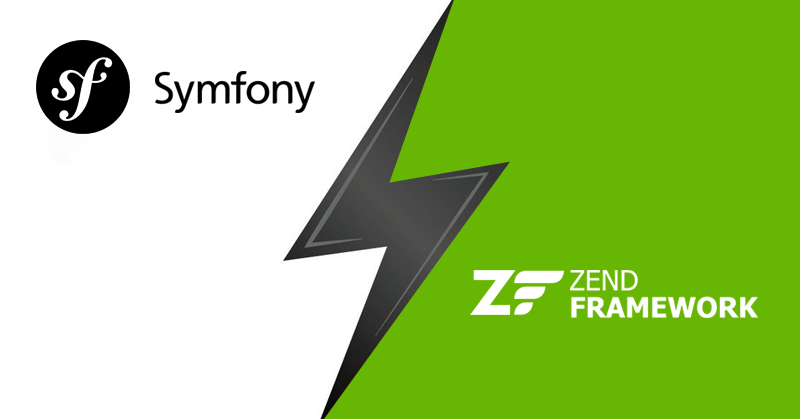
Both the two Frameworks are open source and backed by a large community of Worldwide Developers. Let’s understand some of the most critical aspects that make it evident for anyone to choose these two for building business web software.
What is Zend Vs. Symfony Framework?
The Symfony framework is one of the heavily used PHP frameworks amongst industries.
It mainly comprises of PHP components as part of a vast PHP library. These components are reusable, and each of them performs a specific designated task.
Symfony offers a vast range of application customization options. It is because of this large PHP library that the users can create custom business websites and web applications by choosing their desired set of components.
On the other hand, Zend Framework is defined as an object-oriented PHP web development framework.
What that means is – Developers and programmers can accomplish a wide variety of website and web apps related development tasks by using different types of code packages already made using PHP language.
This eases the web-based business software development tasks and helps entrepreneurs to launch their online business fast.
Version List till Date:
When it comes to Zend Framework,
It has evolved from Version 1 to Version 3 effectively and has provided developers with excellent facilities to build complex business websites and web apps using PHP language.
Let’s have a quick look at it –
Zend Framework 1:
The first and initial version of the Zend Framework presented with these aspects –
- Introduction of the MVC architecture.
- Creating forms through models.
- Database management features for effective results.
Zend Framework 2:
In the next version 2, Zend introduced these features –
- Storing components in single GIT repository.
- Backward compatibility.
- Absence of Composer Plugin.
- No Middleware development related features and functionalities.
- Less structured and unmaintained documentation.
Zend Framework 3
When the version 3 appeared, developers were delighted because it offered –
- Advanced level backward compatibility.
- Storing components in multiple GIT repositories.
- Introduction of the composer plugin called a component installer for easy installation of Zend modules.
- Massive support for middleware development.
- Documentation is done exceptionally well.
In the case of the Symfony Framework,
Have a look at the version history –
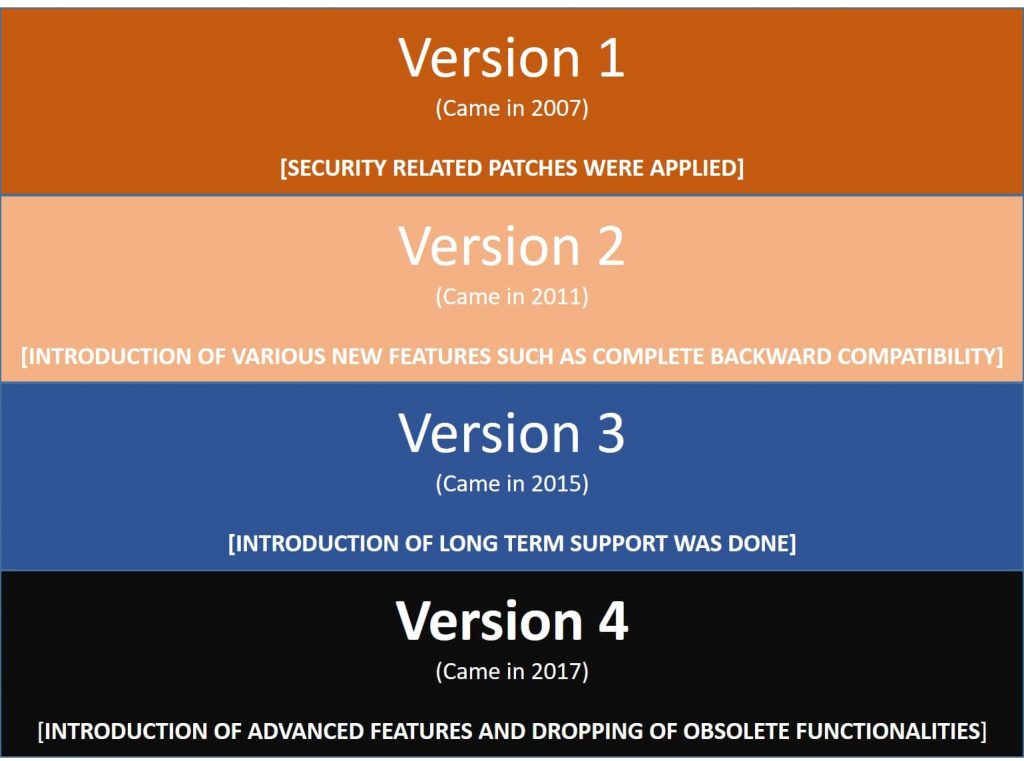
Symfony and Zend Are Licensed Under?
SYMFONY is registered under the MIT license
While
The ZEND FRAMEWORK is registered under the Open Source Initiative (OSI)-approved New BSD License.
Both the above license makes the above two PHP frameworks open source to use, and developer community from around the globe can contribute to its development.
Because of this, an open source PHP Framework is the best choice to develop a business web software solution either for an Enterprise or a mid-range company.
Architecture Difference: Zend Vs Symfony
Talking about the architecture level difference between the two PHP Frameworks, this is what you should know –
The Zend architecture is powered by the MVC (Model View Controller) architecture while the Symfony framework is composed up of a vast variety of PHP Components that are standalone and reusable.
Let me explain to you what that means specifically –
MVC ARCHITECTURE is an advanced architectural pattern where the entire PHP application is divided into three components –
The Model:
Where the whole business logic resides.
The View:
Which comprises of the user interface or the presentation layer. It displays the result produced because of the business logic stored in the MODEL.
The Controller:
Often referred to as the heart of the complete PHP application, CONTROLLER mainly handles the requests sent by the user and acts as the intermediator for the exchange of data across the entire application.
This is How the MVC Architecture Looks Like.
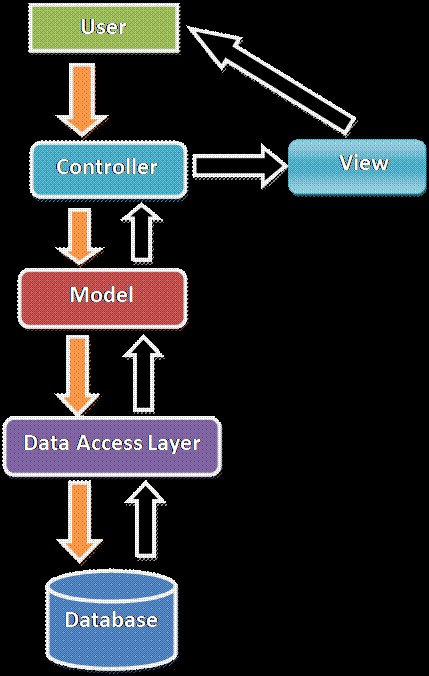
The most significant advantage of the Zend MVC architecture:
The development and maintenance of the ZEND based PHP web application get extremely simplified and sorted out.
On the other hand, SYMFONY architecture does not support the above architectural pattern.
It has various reusable and standalone components that developers can manually bind together to create a manual MVC architecture for their Symfony web application or website if and when required.
Otherwise, they have to work with those components as per their needs and requirements.
Symfony Core Components
At ChromeInfotech, we have a custom software development team for building Symfony based web applications that work using the below-mentioned components –
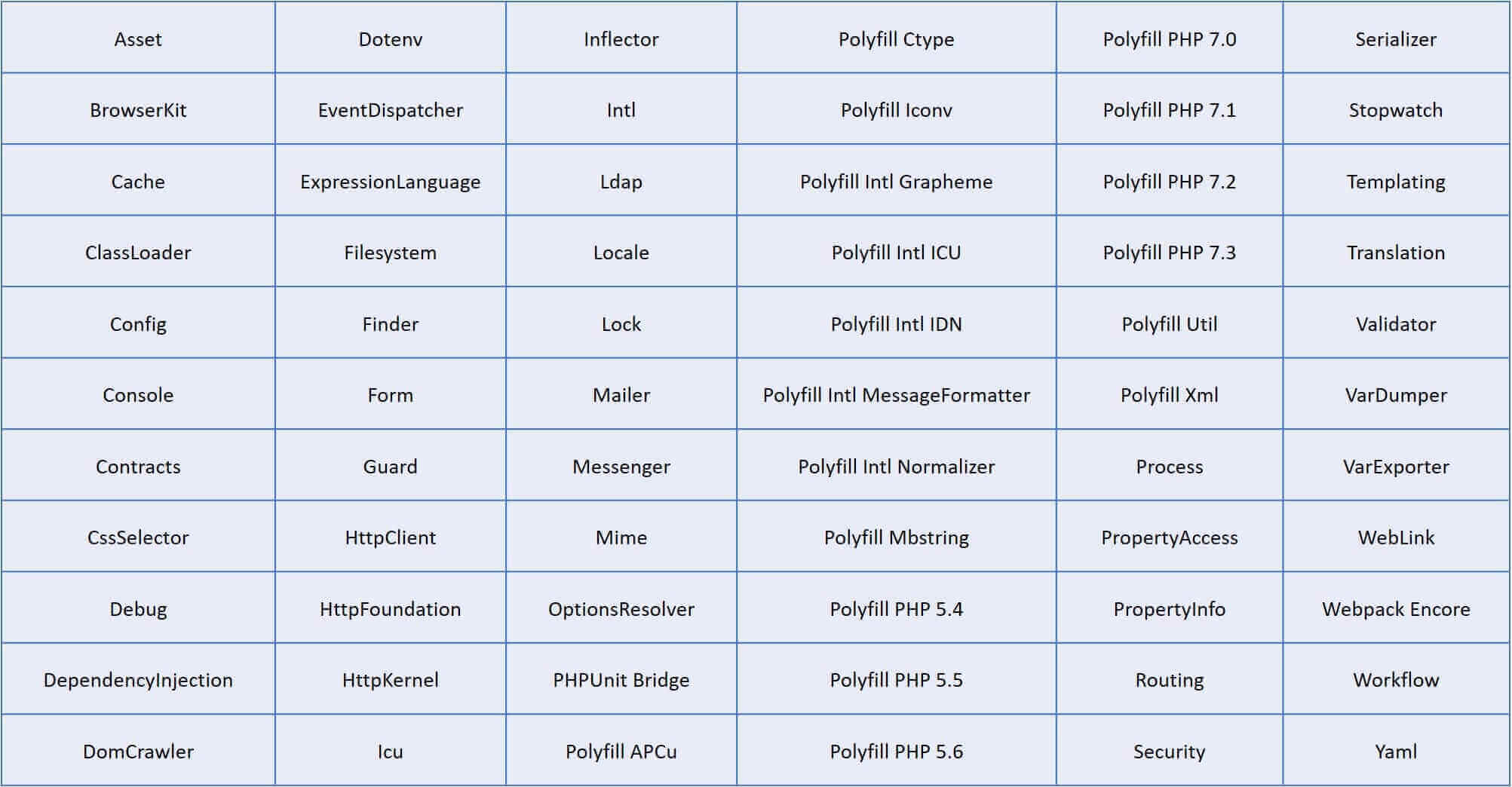
Let Me Give You a Brief Summary About What All the Above Components Can Do –
They can take care of A-Z activities, functioning, and operation of the Symfony web application which includes –
- Application and Data Security
- Data flow across various functionalities and modules of the PHP application.
- Routing (flow of request and response between the user and the server)
- Managing the entire backend and optimizing application performance.
- Ensuring that the Symfony PHP app works well across all the major web browsers and devices.
- Resource optimization including Memory usage and computation power required.
- Manage all the application files efficiently.
- Integrating third-party components effectively.
- Easy database management.
- Implement Caching.
- Code debugging and URL generation.
- Implement authorization
- And much more.
Key Components of Zend
Just Like Symfony,
Zend too has a lot of components that allows our developers and programmer at ChromeInfotech to perform a wide variety of operations and tasks related to Zend based business web application development.
Zend Components, our team, is expert in –
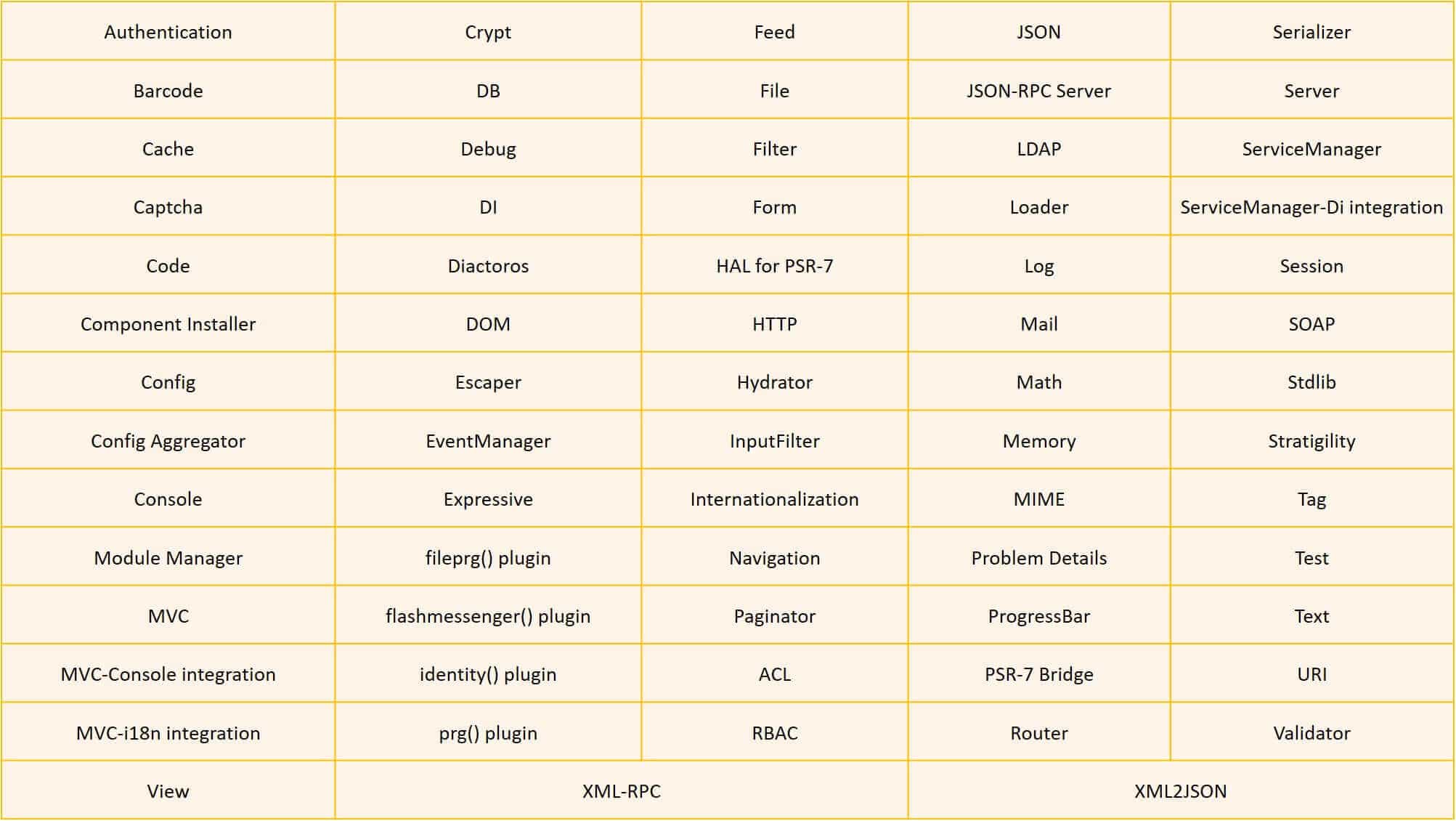
Now let’s understand crisply what all these components can do.
These Zend components can take care of –
- Data authentication aspects.
- Application security from targeted attacks.
- Data security through cryptography and hashing tools.
- Files and modules configuration.
- Efficient database management.
- Files conversions from one format to the other.
- Creating and managing APIs
- Flexible routing system for managing user requests.
- Effective resource management and application optimization.
- Creating and rendering barcodes.
- CAPTCHA generation.
- And Much More.
Interesting Similarity: Zend and Symfony Both Has Template Engine
Both two PHP Frameworks have one colossal similarity. They both have a Templating engine that makes it extremely easy for web developers who are specialist in PHP language to work with templates and develop business applications fast.
Let’s see how that works –
In Zend,
Programmers and developers use a specific class (a set of code) named as Zend_View Class that enables Zend team to work with views (Part of web app presentation section) and design and build the presentation layer of the Zend web application.
Since Zend operates on the foundation of MVC architecture, this particular class also helps to separate the presentation layer from the business logic layer.
Another significant advantage of Zend_View Class is that developers can use PHP as a template language to build web app templates. They can also implement other template systems also.
In Symfony,
There is a robust language for Templating named as TWIG through which Symfony PHP Developers can write custom templates in a wide variety of ways that are concise and readable.
These custom PHP templates help to build interactive Symfony websites and web apps.
Available Database Support:
When it comes to database support, both Zend and Symfony have their unique capabilities.
First of all, let’s understand that there are two types of databases – Relational and Non-Relational Databases.
In relational Databases, data is stored in the form of a table.
But in a Non-Relational Database, the data is stored in some other format except rows and columns.
Do remember that both of them are beneficial.
Coming back to Zend VS Symfony database support –
The Zend Framework supports databases like
- MySQL
- PostgreSQL
- MS SQL
- Oracle
- IBM DB2
All the above databases are relational databases.
But on the other hand,
Symfony supports both relational as well as non-relational databases and hence opens up the scope for a diverse set of Data Management.
ONE QUICK DIFFERENCE BETWEEN ZEND AND SYMFONY FRAMEWORK BASED UPON DATABASE SUPPORT:
The ZEND FRAMEWORK has an in-built ORM System while the SYMFONY FRAMEWORK does not have one. Symfony uses external ORM systems in case there is a need to simplify database related operations.
ORM stands for object-relational mapping (ORM) system through which developers at ChromeInfotech can work with a wide range of databases as well as perform operations without creating/typing long database queries.
Using Symfony and Zend Frameworks: Top Benefits
BENEFITS YOU GET FROM ZEND FRAMEWORK:
- Web software development becomes easier and faster.
- You need less no of inter-dependencies to develop your business application using PHP language.
- The Presence of the MVC architecture makes the application much more structured, optimized and efficient in terms of performance and resource utilization.
- It supports a vast variety of databases and provides a broader scope for incorporating any customizations.
- One of the best PHP framework for rapid application development.
BENEFITS YOU GET FROM SYMFONY FRAMEWORK:
- Highly flexible PHP framework that can be used in whichever way required.
- Simple to use and application development is easy.
- Consumes fewer resources such as memory.
- Highly expandable framework.
- One of the best user-friendly framework to work with for building web software solutions.
Top Platforms Built Using Symfony and Zend PHP Frameworks
These are the Top platforms that are built using Zend.

Also, have a look at the top platforms built using the Symfony Framework.
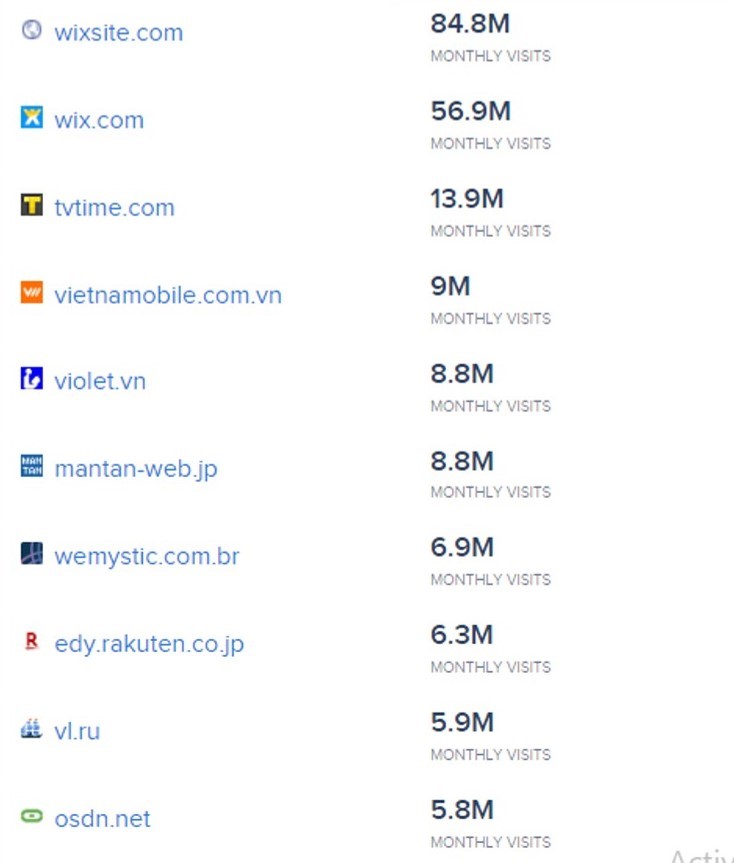
Interesting Statistics:
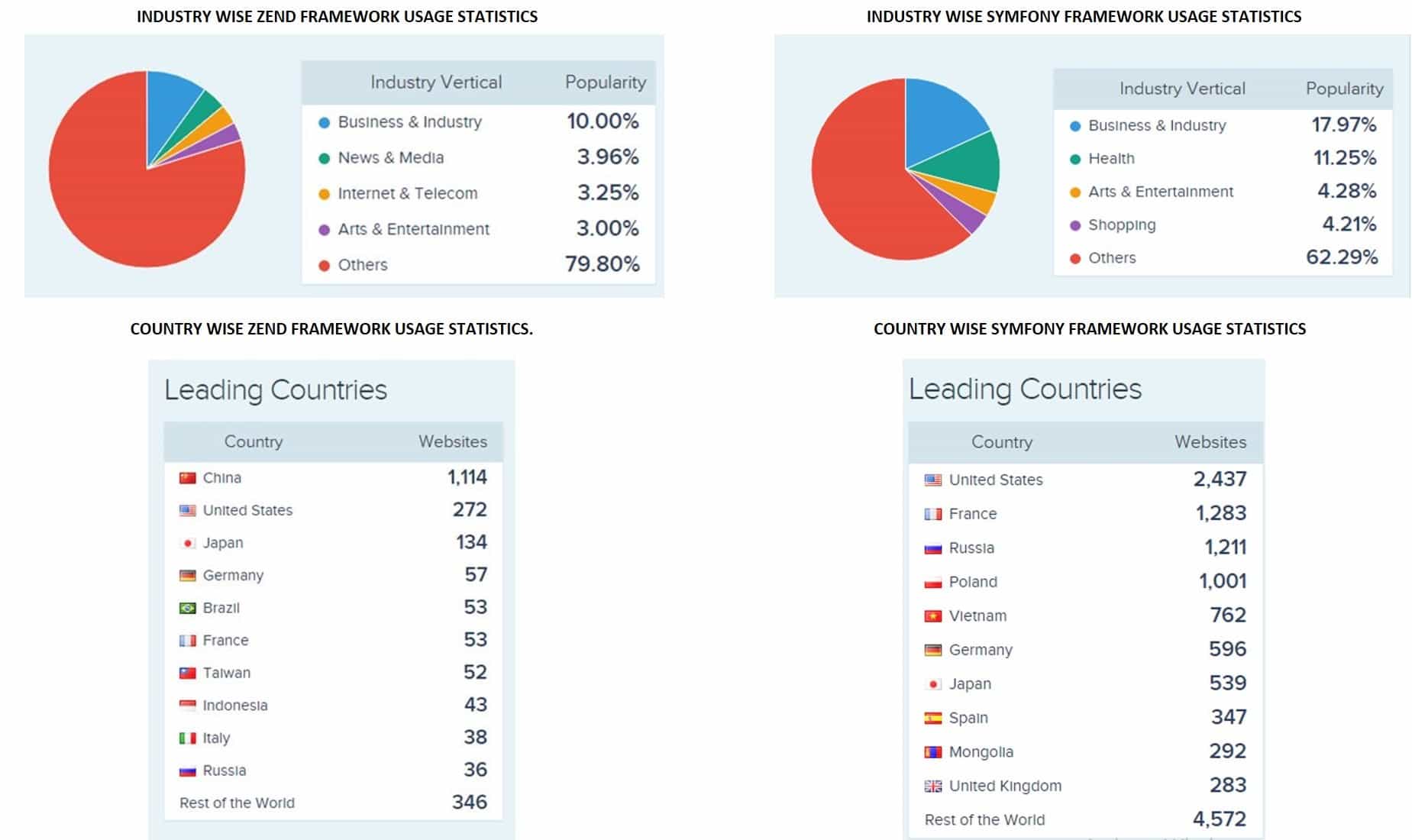
Courtesy: Similartech.com
ChromeInfoTech Has Specialist Symfony and Zend Framework Team
With a 100+ member team, ChromeInfo Technologies provides full-service PHP web development assistance to businesses using the Zend and Symfony PHP frameworks.
We have a full-fledged team of Zend Developers, Symfony Developers, Designers and UI specialists for Zend and Symfony web application development, Quality assurance team with an average experience of 5+ years, analysts, Zend Consultants, and Symfony Consultants.
Do let us know if you have any business website or web app project related to Zend or Symfony framework. Just reach out to us, and we will get started with your requirements.
Also, don’t forget to leave your viewpoints about this blog in the comments section below. We appreciate your valuable feedback.


 +1 (512) 3331-934
+1 (512) 3331-934 +44 (161) 8188-928
+44 (161) 8188-928
